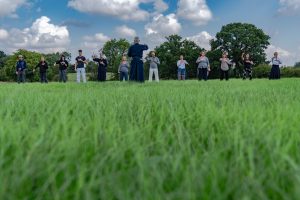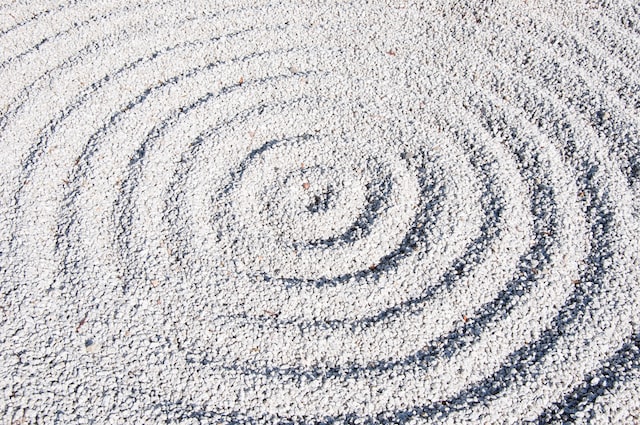To answer the question, we’d like to draw attention to a very specific image, described by Time magazine as ‘the happiest photo of Usain Bolt’. Cameron Spencer, the photographer who took this historic shot, comments on how ‘mind-blowing’ it felt, to see the athlete ‘looking around and having a good time’ while competing against seven fastest runners in the world.
It wouldn’t be an exaggeration to say that we would all want a little more of Usain Bolt’s energy – focused, at the peak of one’s performance, and at the same time, relaxed, at ease, ‘having a good time’. The good news is, you don’t have to train like an athlete. But you may wish to take a closer look at tools and techniques that enable your mind and body to work together, for best results, more effortlessly. What we are referring here to is effective energy management.
Energy management
Energy management and learning agility are some of the most valuable resources that leaders need, not only for personal stamina but for engaging and inspiring others. (This would apply to leaders in different settings, from CEOs and top leadership teams, to those in informal leadership roles). Kaizen Institute, Forbes, and the BBC, among other credible sources, highlight the potential of energy management as an insightful approach to productivity and performance – especially for those of us who have exhausted all there is to learn about time management. In this blog, we’d like to share the three laws of energy management from the Institute for Zen Leadership (IZL). The Institute was founded in 2012 by Dr Ginny Whitelaw, a recognised leadership development expert, biophysicist by training, ex-NASA senior leader and Zen Master.

The three laws (inspiration taken from science) come with practical tools for unlocking, expanding and directing your energy in ways that lead to more authentic leadership, improved performance and effective decision making. Just like with sports coaching for enhanced performance, the three laws engage our whole selves – specifically, our body and mind. The simple secret here is breath, and namely, abdominal, or diaphragmatic breath. The sort of breath that taps into our neural networks and helps our self-regulation – in other words, it keeps us calm and focused (and even joyful!) under pressure.
The three laws
LAW 1: RHYTHM, NOT RELENTLESS
Daily rhythmic rituals to stretch and renew are crucial for managing energy and peak performance. We know from studies of the nervous system that when exposed to the relentless ‘push, push, push’ of stimulation, it habituates, becoming less responsive over time. To maintain peak performance, we have to change the pattern of our actions—not so often as to continually distract ourselves but with purposeful breaks and rituals that keep us fresh. We want to establish the rhythm between challenge and renewal, testing ourselves and recharging.
A best practice taught at IZL is about 90-minutes of challenge time, followed by at least a few minutes of a renewing break and, at least once a day, 30 minutes or more of state-changing physical activity. These daily rituals interrupt the cycle of busyness, and we find a regenerative rhythm to keep cycling back to full charge.
LAW 2: DOWN, NOT UP
‘Hot-headed’, ‘upset’, ‘uptight’, ‘spun up‘: standard terms in our language describe what happens when tension and unruly emotions fill our body and mind. Energy rises, and we become less solid and stable. Elite athletes are trained to recognise and manage this phenomenon. The best of the best are coached around developing centering rituals to bring the energy back down into their feet or lower abdomen and not get caught up in their heads.
While most of us don’t face physical pushing in our day-to-day work, physical and psychological stressors result in increases in blood pressure, heart rate and muscle tension. Our resourcefulness in handling stressors comes from this inner way of directing our energy downwards: calming down, slowing down, and settling down, instead of letting them ‘up’-set us. This can be done through taking a deep breath all the way down, into the abdomen (as opposed to shallow breathing). This action also communicates to those around us whether “we’ve got this”; we are steady and stable- rather than barely hanging on.
LAW 3: OUT, NOT IN
Once we have energy to work with and know how to remain centred (laws 1 and 2), we extend our energy toward where we want to go, picking a direction others can follow. This is what Dr Whitelaw calls a “flip”, which acts as a catalyst and enables our body and mind to move on from resisting the challenge (knowingly or unknowingly) to accepting the reality and working with it.
The ‘flip’ takes us from coping to co-creating; from tension to extension. We are not truly leading when in coping mode, as resistance (strong or subtle) locks our tension and focus on problems we don’t like or are simply tolerating. In co-creating mode, our energy flows towards things we want, with a sense of extension in our bodies, taking us towards opportunity and purpose. Going back to Usain Bolt, his ‘happiest photo’ perfectly captures this connection between focus energy and relaxation (extension) – in fact, in the photo, they are one of the same.
Blog part 2 – Which energy are you bringing to the table today?
Blog part 3 – Use your energy to resonate as a leader
About the authors: Andy Seizan Ryuji Robins lives in the UK and has served the Institute for Zen Leadership as both the UK/European Director as well as the Director of IZL in Asia. Dr Maria Kukhareva is Head of People Development, resilience expert and coach at the University of Bedfordshire. Zen Leadership workshops run as part of University of Bedfordshire’s leadership and management development.
